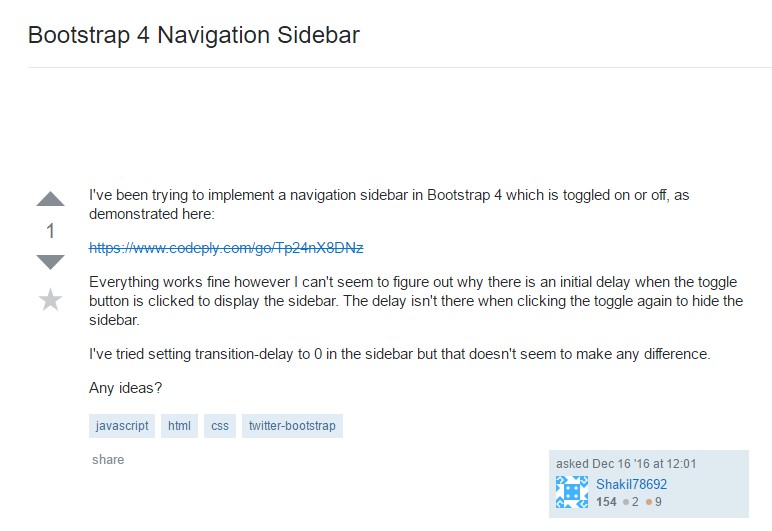Bootstrap Sidebar Example
Introduction
Throughout most of the web pages we currently see the content escalates from edge to edge in size with a helpful site navigation bar just above and simply effectively gets resized when the specified viewport is hit and so basically the showcased content fluently incorporates the whole width of the webpage obtainable. Even so at a particular events the desired target the webpages must serve require together with the fluently resizing content section some other area of the available display width to get appointed to a still vertical feature along with certain urls and material inside it-- in other words-- the widely known from the past Bootstrap Sidebar feature is required. ( discover more here)
The ways to utilize the Bootstrap Sidebar Example:
This is somewhat old-fashioned strategy however assuming that you actually need to-- you can absolutely make a sidebar element with the Bootstrap 4 system which in addition to its own flexible grid system additionally provide a several classes made especially for building a secondary level navigating menus being simply docked throughout the web page.
However let us start it simple-- via simply nesting some columns and rows -- It is pretended this might be the easiest approach. And also by nesting I mean you are able to gave a
.rowSo let us say we want a right aligned Bootstrap Sidebar Toggle together with some material inside it and a primary page to the left of it. We need to set up the grid tier down to what we would like to maintain this arrangement before the sidebar and the major material stack above each other-- let's claim-- medium and up. Therefore a possible strategy obtaining this could be this:
Initially we need to have a container feature to maintain the rows and columns and considering that we are certainly creating something a bit more challenging the
.container-fluidNext we need a
.row.col-md-9.col-md-3Next inside all of these columns we can just create some extra
.rowA few extra methods
Additionally in case you need to create a sidebar navigation menu along with the desired
.col-*.sidebar<main>.col-*Also in case you must produce a sidebar navigation menu together with the desired
.col-*.sidebar<main>.col-*Examine a few online video guide regarding Bootstrap sidebar
Related topics:
Incorporate off-canvas navigation sidebar component

Stackoverflow: Bootstrap 4 Navigation Sidebar

V4 Bootstrap full height sidebar
